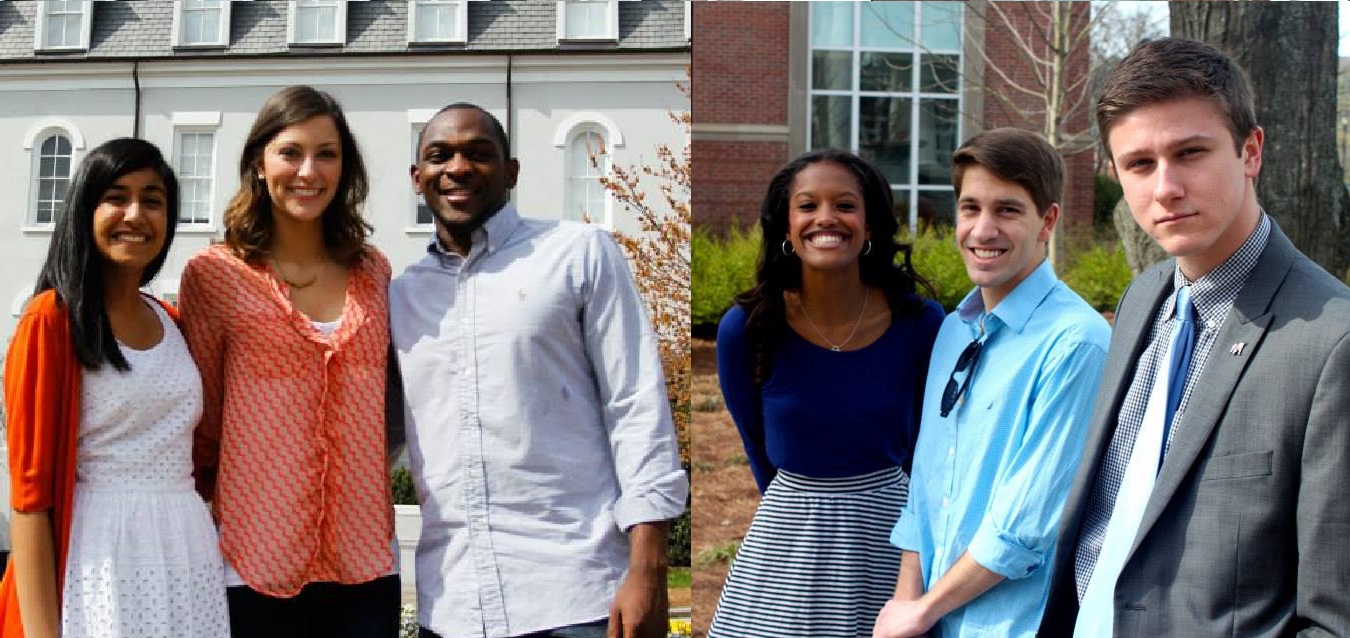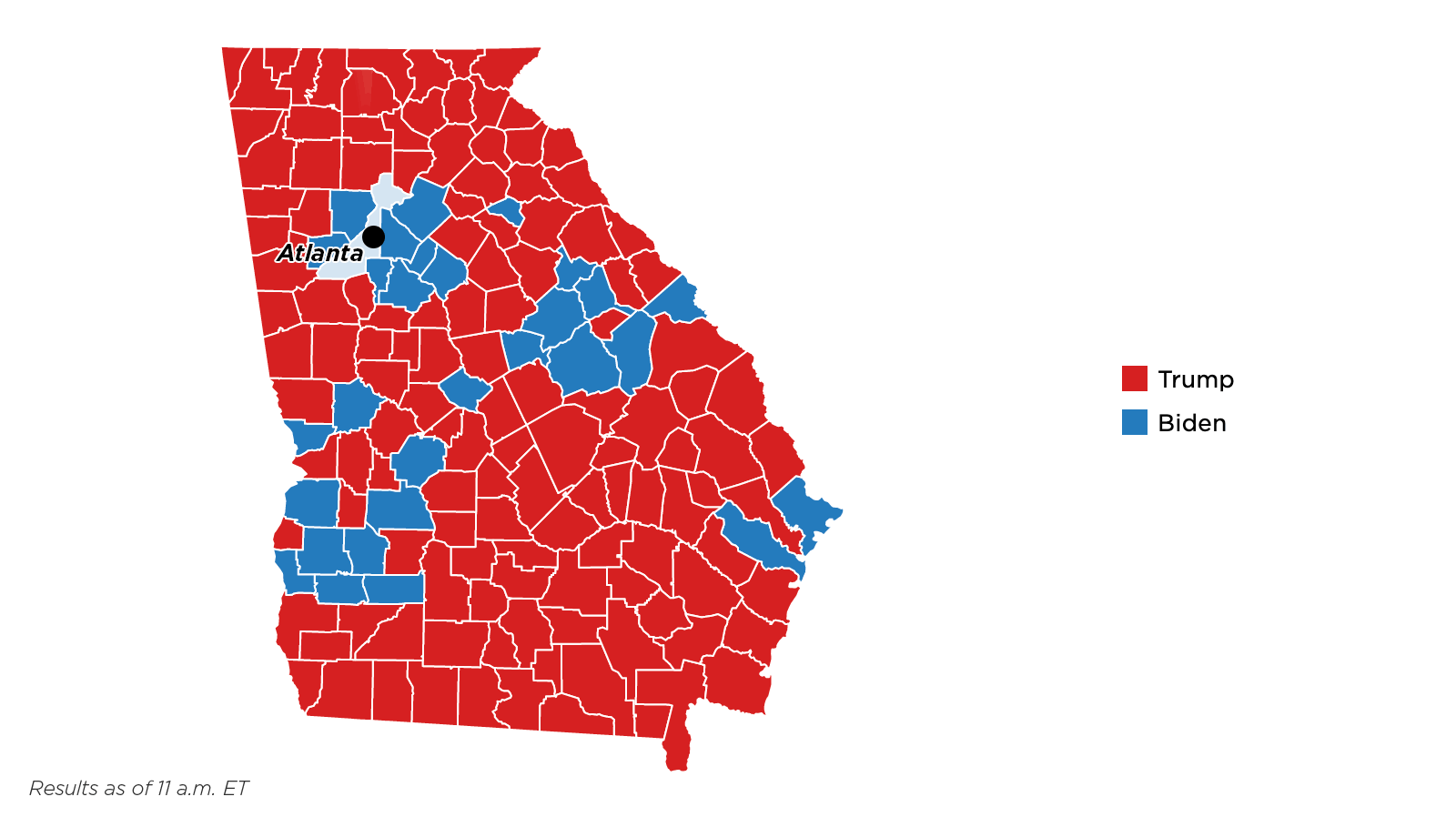By: Carson Aft

Left: Bridge
Right: DJB
The Student Government Association debate can be a way to learn about candidates, ask the tough questions, or simply peacock the beautiful shirt you traded for your vote. It is the pinnacle of a week that can often become bogged down in buzzwords, slogans, and empty promises. On March 31 at the Tate Student Center, the question on everyone’s mind was answered:
Is there really any difference between Bridge and DJB?
Aside from the difference in color scheme for their various campaign swag* the two tickets had previously failed to differentiate themselves to me, the ill-informed and apathetic average student. Entering with no intention of even voting, two hours later, students were rallied so thoroughly that they braved OASIS in order to perform their civic duty. Bridge and DJB were not only different, but also different in ways that matter.
For those unfamiliar with the format of these debates, the candidates for each position are asked questions where they explain their ticket’s positions and intentions, with candidates for treasurer going first, followed by vice presidential candidates, and finally the presidential candidates. The obvious assumption is that the answer to all questions would be some hodgepodge of words like “inclusivity” and “accountability,” but, luckily, this debate strayed away from the airy clichés typical of elections. Actual issues and changes held the dialogue for the evening.
There were definite differences between the potential treasurers. Bridge’s Shivani Vakharia suggesting increased visibility for the funds available to small clubs. In addition to this, she discussed the idea that there are sufficient funds available to students for things like traveling abroad or funding their organizations, but not enough awareness about these funds. This poses a contrast to Brittany Arnold of DJB, who intends to lobby for greater resources for students wishing to study abroad. Further, Arnold advocated removing unnecessary/unused items in the SGA budget in favor of more meaningful or accessible uses.
The concrete turned philosophical once the vice presidential contenders mounted their podiums. Every leader must decide where to spend their capital, whether getting things done internally or fighting for broader goals. DJB’s Jim Thompson made it clear that his greatest pursuit if elected would be fighting so that students with cognitive disabilities (e.g. Down’s syndrome) would be able to come to the University of Georgia and receive an education. Rather than focusing entirely on students that are present currently within the system, he made clear that fighting for future dawgs and potential dawgs meant more to him than the pet projects. Megan Ernst of Bridge, while not disagreeing with the merit of fighting for the inclusion of those students, pushed toward more present-minded goals, such as elevating the voices of students currently present. She encouraged a push for students to be heard within SGA, rather than SGA acting on the behalf of those they may not yet represent.
Presidential candidates define any campaign, regardless of the strength of the ticket surrounding them. It is here that the two parties differentiated fully, breaking from generalities and vagueness. Bridge’s Zek Osibanjo demanded empowering diversity through concrete methods, namely, a mandatory diversity training for all students graduating from UGA. This class would potentially replace another credit, though the idea still seemed abstract and unclear. While definitely well intentioned, there was little discussion of what diversity training involved or whether it would impact the cost and length of attending university. This idea was contrasted by Drew Jacoby of DJB, who emphasized that, while he is definitely in favor of increasing diversity, a mandatory class is not the way to go about achieving this goal. Rather, he proposed the idea that, instead of speaking for the different groups of UGA, he hoped to speak for all 34,000 students. He maintained that each student experience is different, and something is lost from boiling UGA down to categories or classifications.
When asked about their intentions as student leaders at UGA, their answers contrasted sharply. Jacoby emphasized the idea that the president should be a populist, leading UGA by following what the students want. He maintained that, if president, it would not be President Jacoby making decisions, but the student body acting as the supreme decision-making body of the SGA. Osibanjo assured attendees that he would listen to the students, but made sure to emphasize that he would act as a leader, making the decisions he was elected to make. This shows a fundamental difference between the two tickets’ understanding of leadership.
In most campus elections, it can be hard to differentiate the candidates. In this case, however, there was a an obvious contrast. Beyond how they presented themselves**, the two tickets represent very different approaches to SGA. For concrete leadership that may involve taking an extra diversity class, the option is Bridge. DJB makes the case for responsive leadership that believes each student’s experience in uniquely valuable. Regardless of who wins the executive ticket, all students of UGA can rest easy, confident in their leadership.
*Neither campaign provided me with a shirt, despite my obvious attempts at soliciting a bribe.
**DJB was calm and collected, which helped them convey their message. This doesn’t speak definitively to their governing ability, but it certainly helped make the case.

